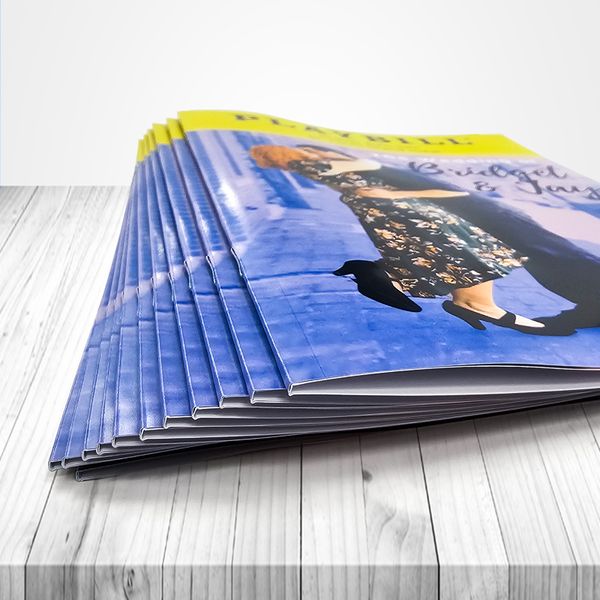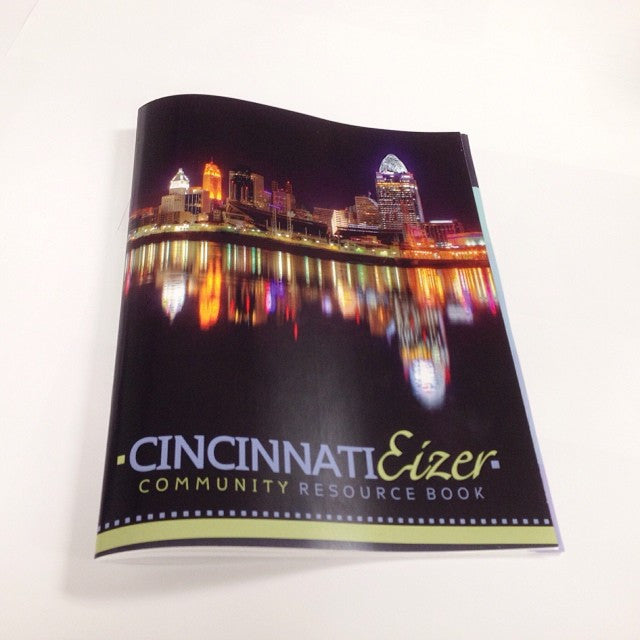7 Must-Know Tips for Affordable Booklet Printing Solutions
The Important Guide to Comprehending Pamphlet Printing Options and Techniques
The procedure of pamphlet printing includes multiple factors to consider that can greatly influence the last item. From picking the suitable layout and dimension to recognizing the nuances of binding approaches, each option plays a crucial function. Additionally, elements such as paper supply and printing strategies additional affect the performance of the booklet. As one navigates these alternatives, it comes to be essential to understand exactly how they interconnect and what that implies for the overall end result.
Understanding Pamphlet Sizes and layouts
When considering brochure printing, comprehending the various formats and dimensions available is important for accomplishing the preferred discussion. Booklets can be produced in countless formats, including saddle-stitched, spiral-bound, and perfect-bound, each offering distinct benefits. Typical sizes range from common letter (8.5 x 11 inches) to smaller options like A5 (5.8 x 8.3 inches), allowing for flexibility based upon material and target audience.Selecting the proper dimension can influence both the layout and reader engagement. Bigger dimensions could fit aesthetically driven content, while smaller layouts may be more portable and user-friendly. Additionally, the variety of web pages influences the selection of binding technique, as thicker pamphlets might require stronger bindings. Ultimately, understanding these elements enables a more customized approach, making certain that the last item lines up with the intended message and visual, improving the total performance of the interaction.
Selecting the Right Paper Supply
Binding Techniques: Considerations and alternatives
When it involves binding methods for booklets, numerous options are readily available, each with distinct benefits. Saddle stitch binding uses a cost-effective remedy for thinner booklets, while best binding strategies offer an even more polished search for thicker magazines. Wire-O binding stands out for its resilience and convenience of use, making it excellent for files that require adaptability.
Saddle Stitch Binding
Saddle stitch binding offers a practical and economical service for constructing booklets, making it a preferred choice amongst organizations and authors. This binding approach entails folding sheets of paper in half and stapling them along the fold line, developing a neat and orderly look. Usually suitable for pamphlets with a reduced web page count, saddle stitching is optimal for magazines, brochures, and educational materials. The simplicity of this strategy enables quick manufacturing and is frequently preferred for short runs or advertising items. Nonetheless, it is essential to note that saddle stitch binding may not appropriate for thicker brochures, as the back might not hold up under enhanced weight. On the whole, it stays a trustworthy choice for many printing tasks.
Perfect Binding Methods
Perfect binding is a commonly used method that supplies a polished and specialist coating to booklets and publications. This method includes gluing the web pages together at the spinal column making use of a strong adhesive, enabling a tidy edge and the capacity to hold a larger number of pages contrasted to saddle sewing. Perfect binding is particularly ideal for thicker brochures, such as catalogs and annual reports, where a strong, flat spine is desired. Furthermore, it offers the option for a published cover that can be developed to improve visual allure. However, factors to consider such as page matter, paper weight, and the meant usage of the pamphlet ought to be taken into consideration, as they can influence resilience and overall quality.
Wire-O Binding Alternatives
Wire-O binding, recognized for its longevity and versatility, provides an outstanding alternative for brochures that need very easy web page transforming and a specialist appearance. This binding technique employs a series of steel loops that hold pages securely, allowing them to lie flat when open. It is particularly appropriate for catalogs, handbooks, and discussions because of its durable nature. Wire-O binding is offered in numerous colors and diameters, accommodating different web page matters and thicknesses. Additionally, it allows the incorporation of he said tabs and covers, improving the booklet's overall visual. Factors to consider for Wire-O binding consist of the selection of wire color, the dimension of the loops, and the degree of personalization desired, every one of which can greatly affect the end product's appearance click and functionality.
Digital vs. Offset Printing: Which Is Best for You?
When picking a printing approach for booklets, comprehending the distinctions between electronic and offset printing is vital. Digital printing utilizes modern-day technology to generate high-grade prints rapidly and cost effectively, making it perfect for brief runs or tasks calling for quick turnaround times. It allows for personalization, offering the ability to print on-demand with very little waste.In comparison, offset printing is a conventional method that stands out in producing big amounts with consistent top quality. It involves moving ink from a plate to a rubber covering, after that to the paper, which causes vibrant shades and exact information. Nonetheless, balance out printing normally calls for longer configuration times and is much more economical for bigger volumes.Ultimately, the choice between digital and counter printing depends on job needs, budget plan, and desired amount. For little, time-sensitive jobs, electronic could be the very best selection, while countered might be preferable for bigger, high-quality manufacturings.

Creating Your Brochure: Tips and Best Practices
When making a pamphlet, careful attention to design, font style selection, and shade use can greatly enhance its performance. A well-structured layout overviews the reader's eye, while appropriate typefaces guarantee readability and share the preferred tone. Additionally, efficient use of color can evoke feelings and highlight crucial info, making the general style much more impactful.
Choosing the Right Layout
Just how can one successfully choose the best design for a booklet? Initially, it is vital to review the brochure's function and target audience. A tidy, arranged layout boosts readability and interaction. Utilizing a grid system can help in lining up aspects continually, producing a professional look. Furthermore, including visual power structure via varying dimensions and positionings of pictures and text can direct the viewers's eye and emphasize vital info. It is additionally important to leave sufficient white area, which stops congestion and permits far better emphasis. Checking various layouts through mock-ups can give understanding right into how the layout executes in real-world circumstances, guaranteeing that the last product satisfies both functional and aesthetic demands. Useful Selecting Suitable Fonts
An appropriate font can greatly improve the general style of a brochure, matching the design and enhancing the content's message. The choice of typefaces ought to take into consideration readability, specifically for body message, as it guarantees the information comes to all viewers. Sans-serif fonts are commonly preferred for electronic layouts, while serif typefaces can lend a conventional feeling in printed materials. It's a good idea to limit font selections to 2 or 3 to maintain visual comprehensibility. In addition, font style size plays an important role; headings should be distinct however not frustrating, while body text must fit for reading. When picking fonts, positioning with the pamphlet's motif and target market is important for efficient communication and aesthetic allure.
Effective Use of Shade
Shade acts as a powerful device in pamphlet design, shaping assumptions and leading visitor feelings. It can stimulate feelings of depend on, peace, or exhilaration, depending on the hues picked. Developers need to consider shade theory concepts, guaranteeing that the selected palette straightens with the booklet's message and target market. Making use of warm colors like red and orange can develop necessity, while cooler tones like blue and green foster tranquility.Additionally, contrast plays a crucial role; corresponding shades can boost readability and aesthetic appeal. Uniformity in shade use across pages even more reinforces brand name identification and cohesion. Eventually, efficient shade implementation not only captures focus however additionally reinforces the pamphlet's purpose, making it a necessary aspect of effective layout.
Finishing Touches: Coatings and Special Results
While lots of take into consideration the content and design of a brochure one of the most critical aspects, the completing touches, such as layers and special results, play a crucial role in enhancing its general allure. Coatings can give security and durability, guaranteeing that the brochure withstands wear and tear. Matte surfaces supply an advanced, non-reflective surface, while shiny finishings can make colors appear even more vivid and appealing. Special impacts, like embossing or aluminum foil marking, add a tactile measurement that can produce a remarkable impression. These strategies can highlight certain locations, accentuating vital info or developing visual rate of interest. internet In addition, UV covering can provide a high-shine finish that raises the general look.Together, these ending up touches not just enhance the booklet's aesthetic however also interact professionalism and reliability and attention to information, ultimately leaving a long-term effect on the reader.
Price Considerations for Pamphlet Printing
Recognizing the different price considerations for brochure printing is important for organizations and companies intending to enhance their budgets. Trick elements affecting prices consist of the option of ink, binding, and paper methods. Greater high quality products, such as exceptional paper or specialized inks, commonly boost the total expense. Additionally, the size and web page count of the booklet play a considerable function; bigger booklets call for even more resources and time to produce.Another important consideration is the printing method, whether digital or countered, as each has its very own pricing framework and viability for different amounts. Companies should likewise consider design expenses, which can vary based on complexity and making use of professional solutions. Inevitably, shipping and handling charges can include in the total, especially for big orders. By assessing these aspects, companies can make informed choices that line up with their monetary abilities while accomplishing the wanted top quality in their printed materials.
Frequently Asked Questions
What Are the Environmental Effects of Booklet Printing?
The ecological effects of pamphlet printing consist of deforestation from paper manufacturing, carbon exhausts from transport, and waste generation from disposed of products - Booklet Printing. Lasting methods, such as using recycled paper and environmentally friendly inks, can minimize these effects
How Can I Ensure Shade Precision in My Pamphlet?
To assure color precision in a brochure, one must make use of calibrated monitors, employ specialist color profiles, perform test prints, and pick high-quality printing services that use color matching and proofing choices for ideal outcomes.
What Is the Normal Turn-around Time for Pamphlet Printing?
The common turnaround time for booklet printing varies depending upon the complexity and amount - Booklet Printing. Usually, it ranges from a few days to 2 weeks, affected by variables such as publishing approaches and ending up requirements
Are There Minimum Order Quantities for Booklet Printing?

Can I Print Booklets in Multiple Languages?
Publishing booklets in multiple languages is feasible. Several printing solutions supply choices for bilingual or multilingual layouts, permitting efficient interaction. Cautious preparation guarantees that design aspects accommodate numerous languages without jeopardizing readability or visual appeals. Furthermore, factors such as paper supply and printing techniques more influence the performance of the brochure. When thinking about pamphlet printing, recognizing the different styles and dimensions available is important for attaining the preferred discussion. When selecting a printing method for brochures, comprehending the distinctions between electronic and counter printing is necessary. In addition, the dimension and page count of the booklet play a considerable duty; bigger booklets need more resources and time to produce.Another vital consideration is the printing technique, whether electronic or balanced out, as each has its own prices framework and viability for various quantities. The environmental impacts of pamphlet printing include deforestation from paper manufacturing, carbon emissions from transport, and waste generation from disposed of products.